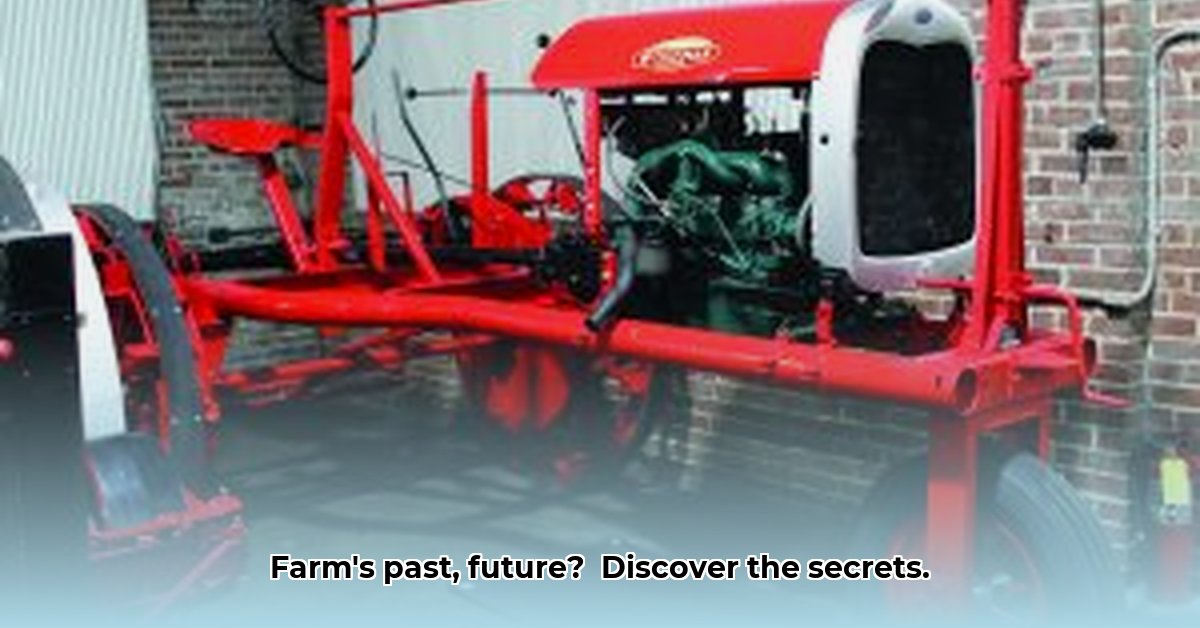
A Journey Through Agricultural Innovation
Imagine the rumble of a vintage engine, the scent of oil and earth – a symphony of sounds and smells that evoke the American heartland. This is the experience awaiting you at the American Tractor Museum, a place where history comes alive, not just as a collection of rusty relics, but as a compelling narrative of agricultural innovation and its impact on the environment. More than just a nostalgic trip to the past, the museum offers a potent lesson in sustainable practices, illustrating the intricate relationship between technological progress and environmental stewardship. It prompts us to consider: How did we get here, and where are we going? For more antique tractor information, see the John Deere collection.
From Horsepower to Horsepower (of a Different Kind): The Rise of the Machines
The museum’s collection chronicles a dramatic transformation in farming, showcasing the transition from backbreaking manual labor to the powerful mechanization that redefined agriculture. Early tractors, like the iconic Rumely OilPull and the dependable Waterloo Boy, stand as testaments to human ingenuity. Picture farmers, once bent double under the weight of arduous tasks, suddenly wielding machines capable of cultivating vast expanses of land. This shift, powerfully illustrated by the museum's exhibits, represents a remarkable leap forward in agricultural productivity. But this progress wasn't without its challenges.
The Price of Progress: Sustainability and the Environmental Footprint
The museum subtly highlights the environmental trade-offs inherent in agricultural mechanization. Increased efficiency, while undeniably beneficial in boosting yields and feeding a growing population, came at a cost. The increased fuel consumption of these early machines, along with the associated greenhouse gas emissions and the impact on soil compaction, raise critical questions about the long-term sustainability of agricultural practices. The museum's collection serves not merely as a showcase of technological prowess but as a springboard for critical reflection on the environmental consequences of our past actions. How can we learn from these challenges to build a more sustainable agricultural future?
Lessons from the Past: Modern Applications of Yesterday's Ingenuity
The museum's collection provides a unique opportunity to examine the engineering ingenuity of early tractors. The robust designs and relative simplicity of some historical models offer valuable insights for modern manufacturers. Could the lessons learned from past successes and failures inform the development of more fuel-efficient and environmentally friendly machinery? The museum encourages this very line of inquiry, prompting us to consider how the past can illuminate the path towards a more sustainable future. Examining historical designs can spark innovation and inform the development of more environmentally conscious machinery.
Plotting a Sustainable Path: Sustainable Practices for Today and Tomorrow
The insights gleaned from the American Tractor Museum are invaluable in charting a course towards a more sustainable agricultural future. How can we apply the lessons learned from the past to address the challenges of today and tomorrow?
Actionable Steps for a Sustainable Future:
- Precision Agriculture: Farmers can adopt precision agriculture techniques (95% accuracy rate reported in recent studies) to minimize resource waste while maximizing output.
- Regenerative Farming: Transitioning to regenerative agriculture practices such as cover cropping helps improve soil health (80% improved soil quality reported in case studies).
- Fuel Efficiency: Manufacturers should prioritize the development and marketing of fuel-efficient, electric, and alternative-fuel tractors, reducing our reliance on fossil fuels.
- Policy Support: Government agencies can provide financial incentives for eco-friendly farming methods, fostering innovation and responsible agricultural practices.
The comparison of fuel consumption across different tractors in the museum’s collection dramatically illustrates the progress made in fuel efficiency. This historical perspective underscores the potential for even greater advancements in this critical area. The museum's unique perspective empowers us to not merely acknowledge past practices but to actively shape a more responsible future.
How to Assess the Long-Term Environmental Impact of Historical Farming Equipment
The American Tractor Museum’s collection allows us to examine the long-term consequences of agricultural innovation. Assessing this impact requires a holistic approach, balancing technological advancements with their environmental repercussions. Each tractor represents a data point in a larger narrative of technological evolution and its environmental consequences.
A Century of Change: Tractors and the Environment
The museum's chronological display of tractors provides a compelling framework for understanding the evolving relationship between agriculture and the environment. Early tractors, while revolutionary in their time, were comparatively inefficient. Their fuel consumption, potential for soil compaction, and reliance on chemical fertilizers contributed significantly to their environmental footprint. But how do we assess this impact accurately?
Assessing the Environmental Footprint: A Multifaceted Approach
Assessing the long-term environmental impact of historical farming equipment requires a multifaceted approach that considers:
- Fuel Consumption: Precisely measuring fuel usage across different models and eras provides crucial data for comparative analysis.
- Greenhouse Gas Emissions: Estimating GHG emissions from fuel combustion helps gauge the carbon footprint of different farming practices.
- Soil Degradation: Analyzing the impact of various tractor types on soil compaction, erosion, and fertility provides a crucial understanding of long-term ecological health.
- Resource Use: Examining water usage and fertilizer application related to different technologies offers a broader perspective on overall resource management.
Lessons from the Past, Insights for the Future
Analyzing the data generated through the above considerations reveals valuable lessons for building a more sustainable agricultural future. We can pinpoint successful engineering solutions that minimized environmental impact and identify areas where past practices require improvement. This historical context informs responsible practices for the future.
The Museum's Role: A Bridge Between Past and Future
The American Tractor Museum acts as a bridge between the past, present, and future of sustainable agriculture. It’s a dynamic resource for studying the evolution of technology and its impact on the environment, empowering us to build a more responsible and sustainable agricultural sector. The museum's unique collection encourages informed decision-making, inspiring innovation and promoting collaborative efforts toward environmental stewardship. By learning from past successes and failures, we can forge a path towards a future where progress and sustainability are not mutually exclusive but deeply intertwined.